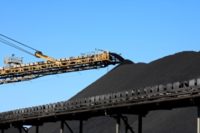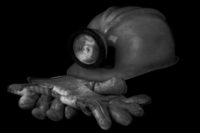More miners back on the job after filing discrimination complaints
 Stepped-up efforts by the U.S. Department of Labor's Mine Safety and Health Administration (MSHA) to educate miners about their safety and health rights, investigate discrimination complaints and take legal action have led to a marked increase in the number of miners temporarily reinstated to their jobs after filing complaints of discrimination in the form of a suspension, layoff, discharge or other adverse action.
Stepped-up efforts by the U.S. Department of Labor's Mine Safety and Health Administration (MSHA) to educate miners about their safety and health rights, investigate discrimination complaints and take legal action have led to a marked increase in the number of miners temporarily reinstated to their jobs after filing complaints of discrimination in the form of a suspension, layoff, discharge or other adverse action.
The number of requests for temporary reinstatements the department submitted on behalf of miners who filed discrimination complaints more than tripled from the period of fiscal years 2007-2009 to the period of FY 2010-2012 (through July 31, 2012), increasing from 22 to 71. Additionally, the department filed 70 complaints alleging mine safety discrimination during the period of FY 2010-2012 (through July 31, 2012), up from 39 from FY 2007-2009.
According to Section 105(c) of the Federal Mine Safety and Health Act of 1977, a miner cannot be discharged, discriminated against or interfered with in the exercise of statutory rights because he or she has filed a complaint alleging a health or safety violation. In addition, miners have rights including, for example, to testify or assist in legal proceedings brought under the Mine Act, or to refuse to work under unsafe or unhealthy conditions.
Issues relating to fears of discrimination and retaliation came to light during congressional hearings held in the wake of the Upper Big Branch Mine disaster. Statements from miners and family members of the miners who died indicated that mine employees had been reluctant to speak out about safety conditions in existence prior to the April 2010 explosion, fearing retaliation by management. Evidence uncovered during MSHA's investigation also supports those claims.
In June 2011, MSHA released new Web-based training tools to help miners better understand their rights and responsibilities, including "A Guide to Miners' Rights and Responsibilities"; an electronic form for filing an anonymous hazard complaint; a discrimination complaint packet; information about black lung benefits and resources; and a compendium of online videos addressing miners' concerns about unsafe working conditions, hiring decisions, how to refuse unsafe work, the role of supervisors and the role of miners' representatives who travel with federal inspectors.
MSHA has instituted other measures to enhance enforcement of miners' rights, including a reorganization of the Office of Assessments, Accountability, Special Enforcement and Investigations to provide enhanced efficiency, staffing, oversight and training of special investigators.
A guide for miners' representatives explaining their rights under the Mine Act is slated for completion this fall. The publication will include information on inspections and investigations, filing a hazardous condition complaint, accessing information using MSHA's Data Retrieval System and becoming a miners' representative.
Looking for a reprint of this article?
From high-res PDFs to custom plaques, order your copy today!






